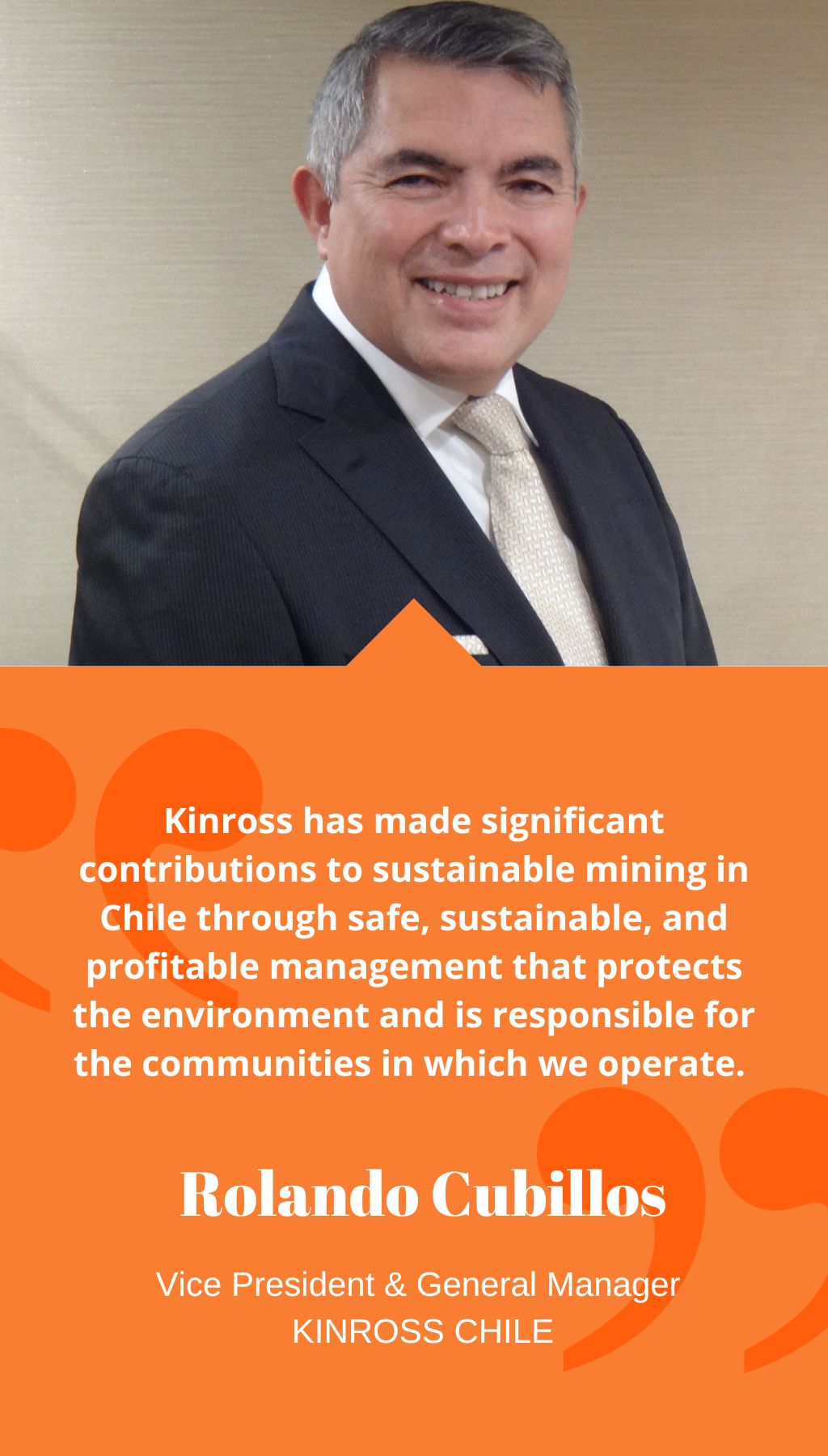
- Chile | 20 April 2022

Could you please provide an overview of Kinross’ La Coipa, Lobo Marte, and Maricunga operations in Chile?
Kinross has made significant contributions to sustainable mining in Chile through safe, sustainable, and profitable management that protects the environment and is responsible for the communities in which we operate. La Coipa is located in northern Chile, approximately 140 km northeast of Copiapó, and has begun taking firm steps towards reopening after an eight-year Partial Temporary Stoppage (PTP) with the exploration of the Phase 7 deposit. Lobo Marte, a gold deposit located 160 km east of Copiapó, at an approximate height of 4,200 m above sea level, will provide operational continuity to Kinross in Chile. Finally, Maricunga has been in the Partial Temporary Stoppage (PTP) stage since 2016, and this project continues to comply with the environmental obligations contracted in its Environmental Qualification Resolutions.
What refurbishments are being made to ensure full operating capacity is reached at La Coipa?
The La Coipa process plant restarted its operations on February 1, 2022, after a year of mechanical maintenance, rehabilitation of electrical systems and instrumentation, as well as restitution of the equipment that had been preserved since 2013, when the PTP was completed. The reopening project continues to make excellent progress, with the initial work plan focusing on the start-up of the mine with an operating line that includes the conveyor belt, part of the tanks, and the SAG and ball mills. The mine operations area inaugurated the mining road in November 2021, which will connect the Phase 7 pit with the primary crusher of the 15,000 tonnes per dy (t/d) plant. The plant renovations are currently focused on the crushing, grinding, leach pads, refinery, filtration, and tailings areas, ensuring that critical components are complete to start first-stage production and move towards full operating capacity by the middle of 2022.
What were the highlights from the feasibility study published for the Lobo Marte project?
The Feasibility Study (FS) for Lobo Marte showed substantial improvements from the Environmental Impact Study presented in 2011, reflecting Kinross’ contemporary vision from a social, environmental, and operational point of view. Environmental and community considerations were incorporated into the project design, with the constant participation of various stakeholders to adapt to the local environment, protect water resources and biodiversity in general. The project schedule will be linearly linked to the end of La Coipa, providing greater flexibility for its start-up, which could take place towards the end of this decade. Kinross continues to work on activities aimed at obtaining permits and the EIA, and this project is expected to extract 4.7 million ounces of gold over a mine life of 16 years.
Can you explain how Kinross Chile is modernizing its Chilean operations through technology?
Kinross Chile is working on several fronts to modernize its processes, such as the incorporation of a Respa air purification system. This system, similar to the ones used by commercial aeronautics, was installed in mining equipment at La Coipa to considerably improve air quality inside the cabins and prevent workers from coming into contact with dust. Kinross Chile also imported a new FAM mobile tailings stacker from Germany, allowing the operator to work in an automated and remote manner on the 500-meter-long structure mounted on 11 caterpillar tracks, thus providing a safer operation.














